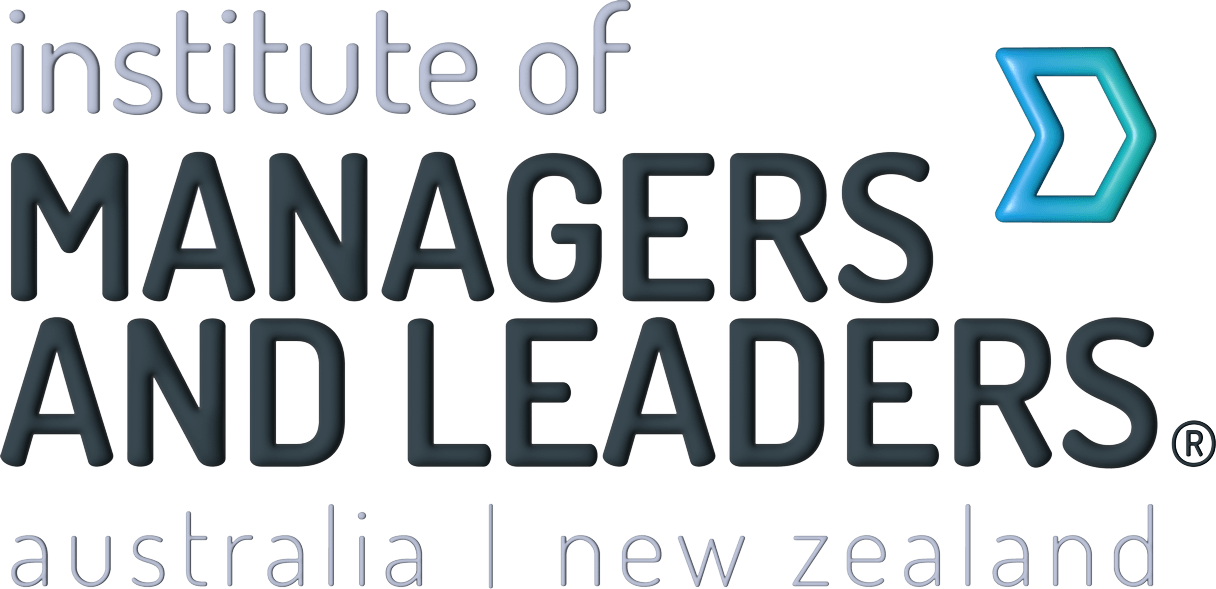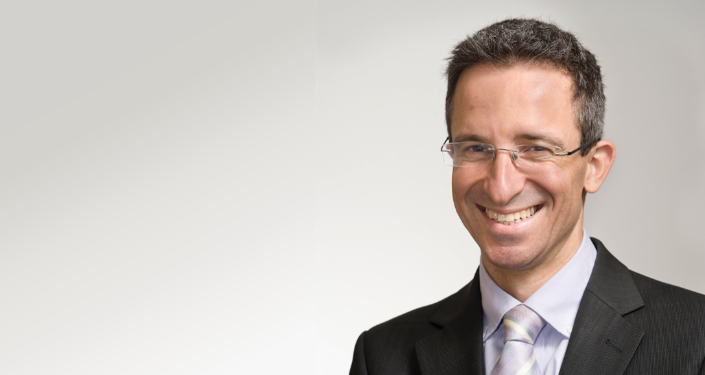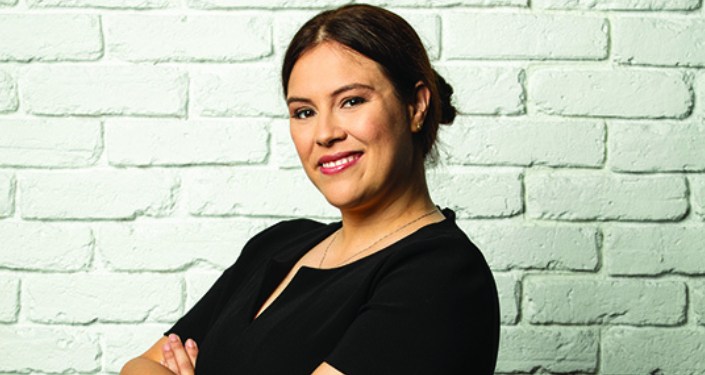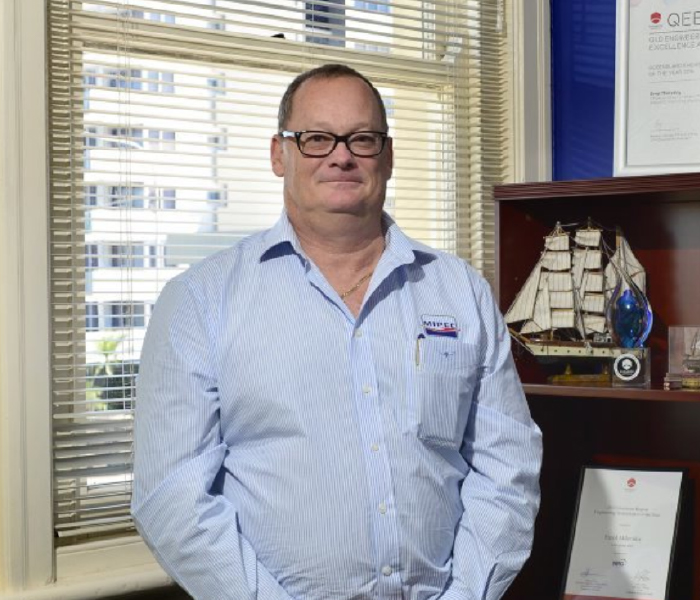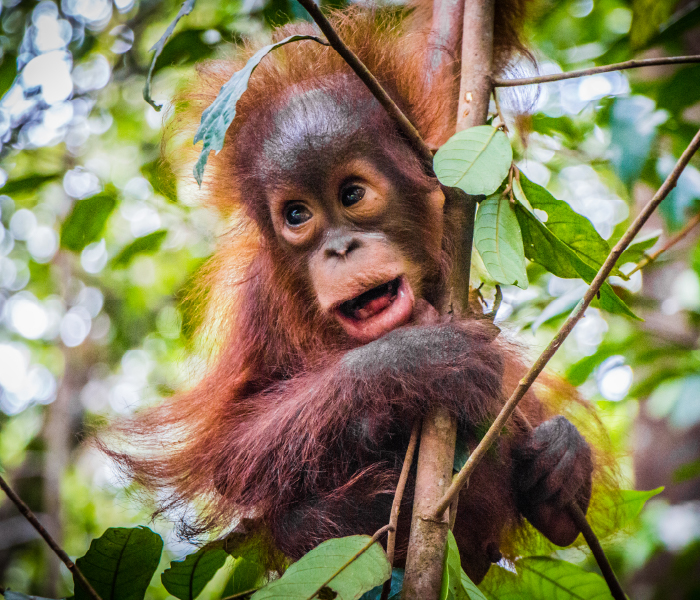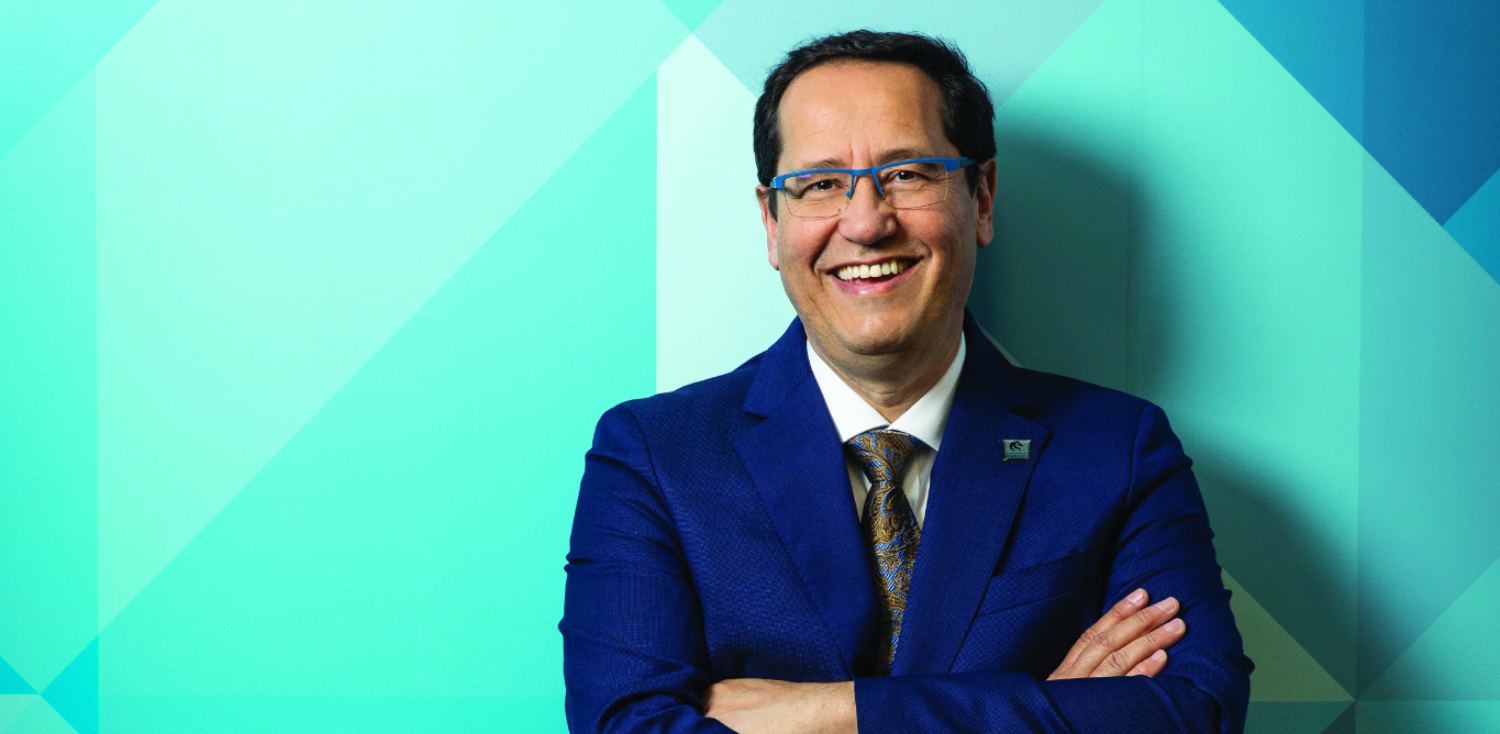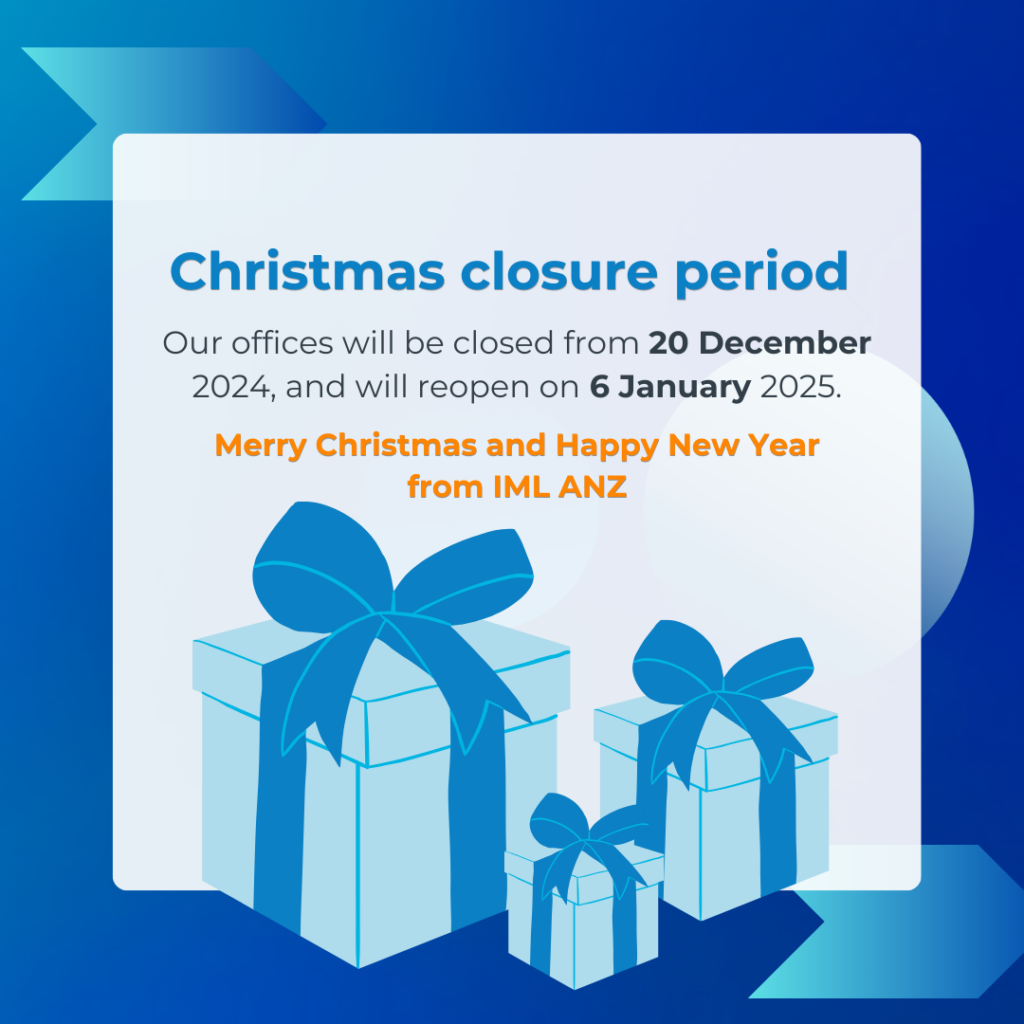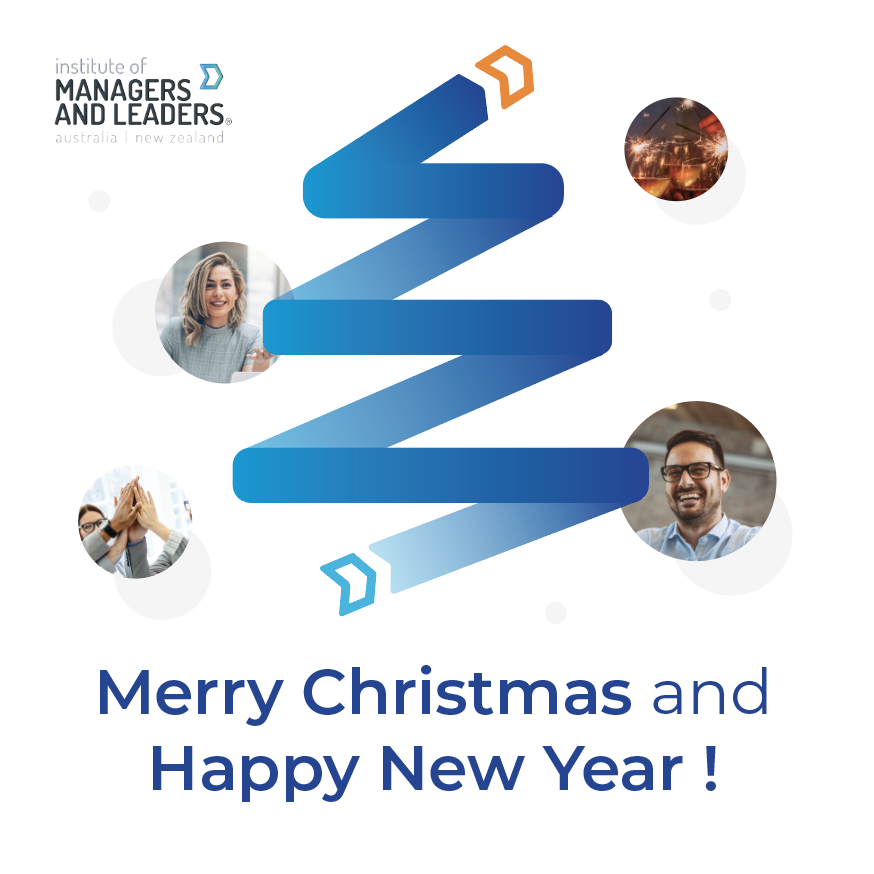Craig Dredge, Principal of Taihape Area School, shares his insights from leading the school and local community through a physical and cultural rebuild.
Continue readingIdentifying potential leaders during tough times
While there’s plenty of challenges that arise amid a crisis, there are also culture-defining opportunities. One of them is an enhanced ability to identify leadership potential. Let’s explore some of the behaviours to look out for in your team members.
Continue readingPositive charge: Injecting happiness into leadership
Internationally renowned speaker on the science of happiness and positive psychology, Tal Ben-Shahar caught up with IML ANZ Chief Executive David Pich CMgr FIML. They uncover the hidden strength that a positive mind can enable and why happiness isn’t as elusive as some believe it to be.
Continue readingMember spotlight Jacob Waitere
In March 2020, Jacob Waitere was promoted to a role that looks after accomodation at the University of Auckland. Shortly after, New Zealand went into lockdown and he was faced with the challenge of supporting the residents and his staff through COVID-19.
Continue readingVirtual Development Day: Watch our recorded sessions
Click on the link below to enter your details and get access to the recorded sessions from our first ever IML ANZ Virtual Development Day. You will be redirected to the sessions upon submission.
Leading with boundless energy: Jasmin Craufurd-Hill
Jasmin Craufurd-Hill FIML is a leader who wears many hats. IML ANZ chief executive David Pich CMgr FIML caught up with her to discuss leadership, volunteering and the future of energy.
Continue readingOne of the greatest engineers in Australia
We trust engineers to design the structures that run our world. For one of the best engineers in our country, his profession is all about building a career that empowered others.
IML ANZ is tremendously proud that one of our members, Errol Milevskiy CMgr FIML, has been named one of the 100 great leaders in Australian engineering history. Milevskiy joins other notable names in the profession in Engineers Australia’s 2019 centenary book, Anything is possible – 100 Australian Engineering Leaders. These 100 leaders were nominated by their peers and include the most highly respected engineers in history.
Notably, Errol is one of the only 32 living engineering leaders in this centenary book, as well as the only marine engineer, marine surveyor or engineering technologist to be recognised among the 100 individuals.
Humble beginnings
Milevskiy’s life wasn’t always about being recognised for greatness. He has faced challenges too. As a baby he received the last rites and as a teenager lost both his parents. As if not tested enough, the North Queensland country local has suffered from the chronic pain condition Trigeminal Neuralgia, an illness with no cure, for the past 18 years.
His working life began as a labourer at the local sugar mill, which soon evolved into an apprenticeship as a fitter and turner. Yet Milevskiy has not merely endured. He has thrived, becoming one of the leading worldwide marine engineers and surveyors, and preventing serious casualties and disasters through his focus on the details critical to marine surveying.
A career anchored on leadership development
Milevskiy’s potential was recognised by BHP, who offered him a cadetship as a marine engineer. After that, he attended some of the most prestigious universities, including Harvard and MIT.
In the late 1990s he produced his prize-winning thesis, ‘Building a Foundation for a Marine Engineer’. Milevskiy wrote it as a guiding tool for cadet engineers to build practical knowledge and techniques, not generally covered in textbooks.
Joining DNV GL, an international classification society, as a marine surveyor and station manager in Newcastle rounded out his skill base. This included surveying different types of ships, certifying numerous machinery parts and systems and being the attending surveyor for the topside construction of ESSO oil platforms.
Later, he commenced auditing to certify vessels and companies to the International Safety Management code from the International Maritime Organisation. He soon became dockyard manager at the largest commercial dockyard in the southern hemisphere. By this time, he was already regarded as one of the world’s most highly qualified surveyors.
Milevskiy continued critical, sometimes dangerous surveying work, notably identifying significant safety and structural issues on an Australian crude oil tanker in 2003. Thus averting potential loss of the vessel, human life, and catastrophic environmental damage. In recognition of his expertise, he was appointed as a member of the elite group of only 20 worldwide surveyors in 2009, named the ‘Flying Squad’, tasked with handling demanding situations on vessels internationally.
A fellow at four different institutes, including IML ANZ, Milevskiy is also a Chartered Manager. Since 2014, he has mentored future leaders and managers through IML ANZ’s Member Exchange program.
The quiet achiever is pleased to have contributed to the improvement of the engineering profession – and leadership in our country.
Connecting with the people of the forest
By Karyl Estrella MIML
Nowhere else can you find orangutans in the wild except in the rainforests of Borneo and Sumatra. So the rare opportunity to see these magnificent creatures in their natural habitat is a genuinely thrilling prospect. A privilege that Core Laboratory Manager at Pathology Queensland, Lara Keller CMgr FIML, enjoyed as a Regional Representative for The Orangutan Project (TOP). “In May this year, I saw the Bukit Tigapuluh ecosystem in Central Sumatra. That was absolutely amazing because only eight people a year enter this conservation site,” recalls Keller. The area is inaccessible to tourists with visits reserved for those able to travel with TOP founder and President, Leif Cocks, while he monitors and evaluates the organisation’s work there.
INSPIRATION
Visits to the orangutan’s rainforest homes are exciting, but that’s not the primary motivation for Keller to volunteer. “In 2017, during a fundraiser for TOP, I got to hear Leif speak about the work they were doing. I’ve always been a massive animal lover and am fascinated by orangutans. They are intelligent, peaceful and sentient creatures, and are Critically Endangered. At that point, I wanted to do something to help, so I decided to volunteer.”
When not visiting remote rainforests, Keller’s activities are less adventurous, albeit very crucial. “Our main goal is to raise the profile of orangutan conservation,” says Keller. “So we do market stalls, attend festivals and visit schools to talk about how people can support the work. We also sell cookies, cakes, books and orangutan toys to raise funds on top of inviting people to adopt rescued orangutan orphans.”
Not only have these activities supported the charity’s ongoing efforts to rescue and rehabilitate orangutans, but they have also opened Keller up to a variety of audiences. “Recently, we visited a kindergarten. I wouldn’t be speaking to kindergarten children in my day job! But it’s a different kind of leadership experience for me.”
Volunteering has indeed helped Keller view leadership from a different lens. “It’s taught me a lot about how to adjust my leadership style and to take into account people’s motivations.” Contrasting her role as a health sector leader to her role as a volunteer leader, Keller hones in on the need to become a positive influence.
“Volunteers have no obligation to meet any targets as paid employees do. Ultimately, I must make them want to join me. They have to feel that we are all working towards something important together.”
WILD ENCOUNTERS
Although given TOP’s unique position, it can be difficult to get a real sense of their work’s impact. Unlike most Australian charities whose work is based on home soil, all the results of the organisation’s efforts are only seen and felt in Indonesian rainforests. That’s why meeting the orangutans was a truly memorable experience for Keller.
On one outing to Central Kalimantan in Borneo last year, she witnessed the rehabilitation of young rescued orangutans in what TOP affectionately calls ‘jungle school’. “They were learning to climb trees, and one of them fell out of the tree and cried out like a baby,” Keller recalls. “It looked like he’d broken his arm, so they put on a splint and took this little one to the closest town, which is an hour and a half away. He got x-rayed, and fortunately, he didn’t fracture his arm and was back to climbing trees in no time.
“During the trip in May this year we saw mothers and babies who have been released back into the rainforest. When we reached a different part of the camp, I recognised one of our adopted babies, Citrawan, as she attended jungle school. I’ve seen so many photos of her and spoke about her to so many people. It was amazing to see her face-to-face. These are the moments not many people get to experience.”
Keller considers her volunteer work as a privilege, offering a unique sense of fulfilment. “You can go see orangutans in captivity, but seeing them in the wild is a completely different experience,” explains Keller. “I’ve looked them in the eyes and seen the person inside. And that’s how I view them, as persons.” Almost literally true when you consider that the word ‘orangutan’ in the Malay language translates to ‘person of the forest’.
It’s no surprise then that Keller recommends volunteering for all leaders. Her advice, “Find something you’re passionate about.” She also recommends doing your research and finding out what the commitment involves. The effort, Keller believes, is all worth it. “It’s been a marvellous thing for me. I feel this is something I do to reach my potential as a person. Giving something back and doing something for my soul makes me feel refreshed and excited. I love it!”
PRECIOUS CREATURES
Today, there are only 104,700 Bornean orangutans, just 7,500 Sumatran orangutans and no more than 800 Tapanuli orangutans – the most endangered of all the great apes.
For more information about The Orangutan Project and their conservation work visit orangutan.org.au.
This article originally appeared in the December 2019 print edition of Leadership Matters, IML ANZ’s exclusive Member’s magazine. For editorial suggestions and enquiries, please contact karyl.estrella@managersandleaders.com.au.
Learning new ways: Education keeps pace with a changing business landscape
Political tension. Technology disruption. Regulatory change. Economic tremors. The list goes on. Every aspect of modern life seems clouded by uncertainty right now. For managers and leaders, it can feel like the only certainty is that more change is coming.
That presents an enormous challenge for those institutions charged with educating the managers and leaders of the future. How can universities prepare graduates for a business landscape that could be unrecognisable in years to come? Or, to put it another way, how is it possible to prepare someone for tomorrow, when you don’t know what tomorrow even looks like
Keeping up with business and education
One man who may have the answer is Professor Tony Travaglione. The University of Newcastle’s Pro Vice-Chancellor of Business and Law has his finger on the pulse of business education in Australia and worldwide. Until recently, he was President of the Australian Business Deans Council, providing leadership to 39 business schools, nationwide. And he is currently on the International Advisory Board at the Institute of Management Technology in Dubai.
Prior to his role at the University of Newcastle, Professor Travaglione held senior positions at the Curtin Business School, the University of Adelaide and the University of Sydney. He has also held the position of Visiting Professor at Stanford University where he taught MBA students at the Stanford Graduate School of Business.
Throughout his career, Professor Travaglione has maintained close links between the education sector and the business community. He has delivered research and other projects for an enviable collection of organisations including ANZ bank, BHP, Qantas, Nespresso, Main Roads Western Australia, Westrail, Hunter Area Health, and Centrelink. He has also conducted projects for international organisations including Norwich Union, Royal Sun Alliance, Guinness Brewing and the London Underground.
IML ANZ chief executive David Pich CMgr FIML caught up with Professor Travaglione to discuss how the education sector is evolving to meet the changing needs of aspiring managers and leaders.
Addressing the issue of graduate employability
DAVID PICH: Employers sometimes lament that university students, upon graduating, are not ‘work ready’ for the business world. How would you respond to that?
TONY TRAVAGLIONE: Traditionally, graduates who undertook business courses such as MBAs found it relatively easy to find employment. However, more recently, we’ve seen a shift where some institutions’ curricula have struggled to keep pace with the speed of change in the world of work. Of course, the flipside is that there’s been huge success for the universities and courses that have reacted positively and quickly.
Connecting with industry and staying relevant
 DP: How can educators adapt to stay relevant?
DP: How can educators adapt to stay relevant?
TT: Working closely with the business sector is a big part of it. One way we’ve done this at the University of Newcastle is in relation to our EMBA, where we’ve consulted with industry. This has resulted in students working on organisational projects. We’re keeping the curriculum up to date by having organisations and employees working on real-life projects, and bringing their learning back to the classroom, and vice versa. So instead of completing textbook assignments, they’re rolling up their sleeves and doing workplace projects.
DP: The University of Newcastle’s links to the business sector now extend to IML ANZ too. We’re delighted to have the University of Newcastle on board as a Pathway Partner for your Executive MBA (EMBA). What excites you about that partnership?
TT: It’s a wonderful opportunity to work with a really professional body like IML ANZ and it helps to address what is missing in MBA programs right now in Australia. To enrol in this program, you need support from an employer. The curriculum supports you in the attainment of a range of skills and competencies, allowing you to graduate as a Chartered Manager in one year if you complete all the eight courses. And, during that journey, students are entitled to IML ANZ Member benefits.
DP: I can’t help but think that’s how education, and particularly tertiary education, has to go: building more of these kinds of partnerships with industry.
TT: Oh absolutely. That’s how to ensure university courses adapt at the same speed that industry does. And equally, if a university is leading the way in terms of research, then that also feeds its way back into the organisations. Everyone benefits from the knowledge that everyone brings to the table.
The shifting education landscape
DP: When I think back to my own university degree, it was essentially sitting in an old dusty, draughty lecture theatre. It was really no preparation for the world of work at all. Back then, the gap between work and academia was huge. Has much changed?
 TT: If you were to come and attend classes at the University of Newcastle now, your experience would be unrecognisable from what you just described. The analogy I would use is that the old form of learning – hour-long university lectures – was like sitting down and reading a newspaper for 60 minutes. But instead, we now use blended learning.
TT: If you were to come and attend classes at the University of Newcastle now, your experience would be unrecognisable from what you just described. The analogy I would use is that the old form of learning – hour-long university lectures – was like sitting down and reading a newspaper for 60 minutes. But instead, we now use blended learning.
Blended learning is more like sitting down with three or four friends, and discussing what you’ve learned having already read the newspaper. Then, at a certain point, a subject matter expert (a university academic and/or industry expert) joins you for the discussion to add their insights. All of a sudden, someone jumps in saying, “Well, I found this online yesterday”. Someone else points out something they read in a magazine. And by the time that 60 minutes is up, you’ve covered numerous sources from around the globe and participated in a sophisticated debate.
Given the choice, what would you do: Stick to reading the newspaper for an hour? Or engage in all those interactions with people using all of those sources of information? I think it’s obvious which approach would enrich your learning most.
DP: In the past, people would study a tertiary degree then work in a single profession or industry for the rest of their lives. Now, as people live longer and markets are increasingly disrupted, individuals are likely to switch careers several times in their lifespan. That means reskilling and learning will be required throughout people’s lives, not just when they’re in their teens or early 20s. What advice would you have for managers and leaders who want to thrive in such an environment?
TT: The skillset that will be transferable across industries may not necessarily be a technical one. It is more about soft skills which centre around leadership: teamwork, negotiation, understanding culture, harnessing diversity, and so on.
My advice to anyone is that the days of a single qualification are indeed gone.
DP: That echoes what we’ve been saying at IML ANZ. If you want to lead people, then technical skills alone are not enough. However, I was interested when you used the phrase ‘soft skills’. I use it too – but I have a problem with it because ‘soft’ sounds easy. Whereas soft skills are actually hard to master!
TT: I agree – we do need to change that phrase. Perhaps we should simply talk about leadership skills? Because to be a successful leader, you’ve obviously got to understand what it takes to recruit, develop and manage a successful team. You’re only able to do that if you’ve got effective leadership skills. You can be the best in the world in a technical area, but if you don’t have those leadership skills, your career will stall. You’re not going to make your organisation as effective as it should be.
DP: Are you optimistic about the future of business education in Australia?
TT: I’m an optimist simply because I believe in competition. There is currently competition in the marketplace and that is only going to grow and grow. Yes, we all offer pretty much the same products, but how the products are delivered is what matters. At the University of Newcastle we use blended learning, as I described before.
There are other business schools who would expect their students to turn up to a big lecture room packed with hundreds of students.
You can simply record that lecture and play it over and over again year in, year out. And the students know that. So why would they bother going to classes? When we hear that perhaps students are not attending classes in the same numbers as they might have done 10 or 15 years ago, it’s easy to see why.
Today, some educators are trying to teach students the same way that they did 10 or 15 years ago. And students today are not interested in those outdated forms of delivery.
But I’m optimistic for business educators and institutions who follow a different path – the path of blended learning.
The full version of this article appeared in the December 2019 print edition of Leadership Matters, IML ANZ’s exclusive Member’s magazine. For editorial suggestions and enquiries, please contact karyl.estrella@managersandleaders.com.au.
